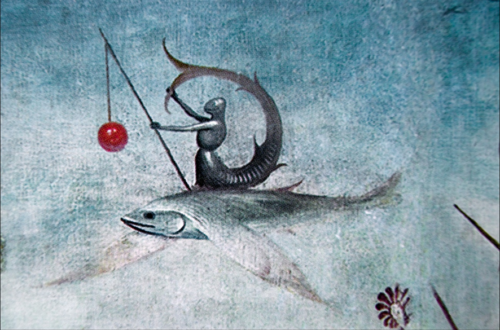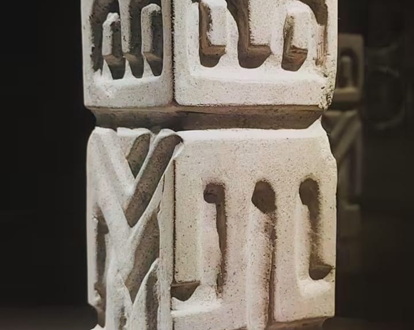Relational and Social Constructionist Consortium of Ecuador (IRYSE)
Maritza Crespo Balderrama, MA and Diego Tapia Figueroa, Ph.D ,
It is important to identify the phases and characteristics of abuse, to raise your voice, and to stop it.
Gender-based violence is not a contemporary phenomenon, but rather it is something that has occurred over centuries, sustained by the abusive use of power, and by religious and cultural conceptions in which a distant view of acceptance and respect for gender stands out. However, in recent decades, gender studies have allowed us to understand -in a better and more detailed way- how this process occurs.
One of the most well-known, clear, and graphic proposals of the process that involves gender violence and violence against women, is the one proposed by the American psychologist Leonore E. Walker, in which she describes how violence deepens and becomes more serious -over time- turning into a spiral in which both the victim and the aggressor are immersed.
Phases of a cycle
Before describing the phases of the circle of violence, it is important to be clear that this occurs within a relational context; although gender violence exists in various spaces and relationships (work, educational, and social contexts) the cycle of violence arises, especially in relation to the area of family and couple life.
In this context, the fundamental protagonists of the cycle are the members of the couple, where one of them puts themselves in the position of aggressor or victimizer: they hold power, they impose themselves by force, and they generate relationships of fear, insecurity, or mistrust; and the other is in the position of being attacked or being a victim: feeling afraid, receiving blows, insults or other forms of abuse. He is and lives in a vulnerable situation.
The description given below about the process of gender-based violence can serve as a guideline to recognize whether or not you are being part of it. However, it is advisable to keep in mind that there are particular details in each relationship that can modify one or all of the phases.
Phase 1. The calm: it is a period in which there are no attacks and everything is in apparent tranquility. The aggressor’s perception is usually that everything is fine, while the person being attacked may not notice (especially when they are just entering the cycle) that they are in this phase. This moment is more evident for the attacked person when they have already gone through all the parts of the cycle and it is starting again.
Phase 2. Tension: this can last weeks or months. Here conflicts or friction begin to arise and the aggressor manifests hostility or violence, especially psychological, towards the attacked person. Outbursts of anger (explosions, sudden screams, hitting objects), periods of silence (“the silent treatment”), excessive control, etc. are common. For his part, the attacked person usually makes efforts to please or calm the aggressor, anticipating situations of conflict. The feeling of fear and increasing danger begins, they tend to minimize their partner’s violent attitudes and report constantly feeling as if they were «walking on eggshells» concerning their daily life.
Phase 3. Explosion: this is the most recognizable moment of the cycle. The aggression becomes evident. It usually lasts between 24 and 72 hours. It is a period in which screams, struggles, blows, insults, sexual assaults, etc. happen. They fill the space of the relationship. The aggressor may be “out of his mind,” as a result of his own emotional situation or due to an external event that is usually used as a pretext for violence. The victim, for his part, usually does things to survive the abuse: from accommodating to please the aggressor’s demands, having a passive attitude, having physical evidence (beatings) of the situation, escaping from the place of residence, etc. However, the fear of further retaliation is usually greater than the motivation for reporting it.
Phase 4. Conciliation or honeymoon: After the explosion of violence, a stage usually occurs that can last days, weeks, or months, in which the aggressor expresses calmness, regret, and «positive» motivations to change. Promises about not repeating the violent situation are common and the aggressor presents himself as vulnerable and complacent. For its part, the victim presents feelings of guilt for causing pain to the aggressor, usually believing in promises and regrets. If it has been reported, it is at this stage that the complaints are withdrawn or returned home. Children (if they exist) usually place themselves in the role of caregivers for their parents, feeling committed to maintaining the peace of the couple. People in the inner circle usually think that the violence will not happen again and that it was an “isolated episode”, which is almost never real.
Studies and experience of therapeutic work with couples immersed in the cycle of violence have shown that, with the passage of time and repetition, the cycle becomes shorter and shorter and that the calm and honeymoon phases usually last, each time, less and less; while the tension and explosion phases tend to increase in intensity and number.
Am I in the circle of violence? Warning signs
Phase 1: This is violence, it is necessary to be aware and realize:
Are you blamed for your mood swings, discomfort, or frustrations?
Are your opinions dismissed and criticized?
Is your departure, arrival, or use of time controlled?
Has your relationship led you to be self-destructive?
Phase 2: It is necessary to seek help, not minimize this situation:
Are you pushed, hit, or pinched?
Is your partner excessively jealous or possessive?
Has your partner isolated you from your friends and family?
Does he threaten to take away your children or property if the relationship ends?
Phase 3: You have to report it, it is a dangerous situation:
Are you afraid of your partner?
Does he threaten to hurt himself if the relationship ends?
Does he tell you that you couldn’t manage things on your own?
Has he attacked you again after promising not to do it again?
Begin to cross the circle of violence
We must keep in mind that what tyrannizes, along with fear and guilt, is what is not said. Abandon prejudices regarding the relationships between emotions and words, and understand that the word is the condition of the possibility of emotion.
To support breaking out of the circle and cycle of violence, it is necessary to provide space and time (respecting the rhythms of each process) so that the multiplicity of voices, stories, and points of view (personal and family) can be heard. The person who bravely wants to break this cycle of violence and asks for help generally does so after much suffering; the average is more than seven years.
In the dialogue with the victim of violence, it is essential not to pathologize, label, blame, or justify, much less cover up the abuse and violence. Neither does assuming a role of omnipotence, nor minimizing or making invisible all forms and expressions of that violence.
Support networks (family, therapeutic, social) contribute if they make each woman feel understood, supported, accepted, and listened to. We must dismantle the dominant, cruel, and unjust visions that cover up violence by contributing to building clear relational boundaries that guarantee respect for rights. Mobilize processes of recognition, validation, responsibility for one’s self-care, love, and the opening of possibilities.
That each person, each woman -who was oppressed by the circle or spiral of violence- develops the power of their own voice, that they can dialogue and exercise the right to have their voice heard, that they can be taken seriously and respected.
It is about understanding and conceiving the interrelationship of men and women, as a useful and emancipatory way of the social and cultural conditions existing in today’s society. It is understood that humanity needs each other for the joint construction of meanings, to be fair and responsible with others, and to prevent abuse.

(***) Authorised reproduction by:
https://www.maxionline.ec/el-circulo-espiral-de-la-violencia-de-genero
English translation by Bruno Tapia Naranjo



